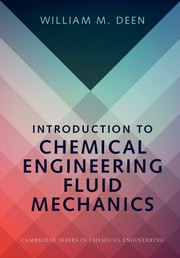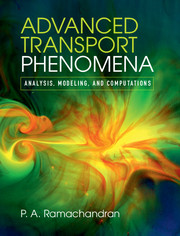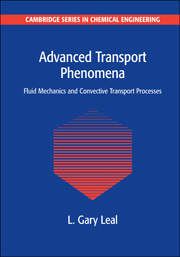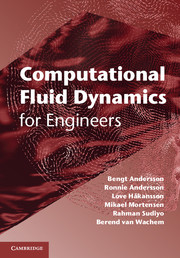Introduction to Chemical Engineering Fluid Mechanics
Designed for introductory undergraduate courses in fluid mechanics for chemical engineers, this stand-alone textbook illustrates the fundamental concepts and analytical strategies in a rigorous and systematic, yet mathematically accessible manner. Using both traditional and novel applications, it examines key topics such as viscous stresses, surface tension, and the microscopic analysis of incompressible flows which enables students to understand what is important physically in a novel situation and how to use such insights in modeling. The many modern worked examples and end-of-chapter problems provide calculation practice, build confidence in analyzing physical systems, and help develop engineering judgment. The book also features a self-contained summary of the mathematics needed to understand vectors and tensors, and explains solution methods for partial differential equations. Including a full solutions manual for instructors available at www.cambridge.org/deen, this balanced textbook is the ideal resource for a one-semester course.
- Presents dimensional analysis and order-of-magnitude estimation as tools to help students identify which forces are important in different settings
- Explains from an experimental viewpoint the friction factors for pipes and other conduits, terminal velocities of particles, drops, bubbles, and flow in porous media, packed beds, and fluidized beds
- Describes the physical and mathematical distinctions among major flow regimes, including unidirectional flow, the lubrication approximation, creeping flow, pseudosteady flow, irrotational flow, laminar boundary layers, turbulent shear flow, and compressible flow
Reviews & endorsements
'Professor Deen has provided many examples illustrating the principles of fluid dynamics in a clear manner, which highlights both important ideas and their generality. A student should find the approach to be one that assists learning and understanding, and an instructor will find many examples, ideas and quality explanations.' Howard Stone, Princeton University, New Jersey
'It is very well written, the explanations are clear and detailed, and it contains numerous original 'real-world' examples and problems.' Andreas Acrivos, Stanford University, California
Product details
October 2016Hardback
9781107123779
411 pages
254 × 180 × 23 mm
1kg
192 b/w illus. 24 tables
Available
Table of Contents
- Preface
- Table of contents
- Lists of symbols
- Part I. Use of Experimental Data:
- 1. Properties, dimensions, and scales
- 2. Pipe flow: friction factor and pressure drop
- 3. Drag, particles, and porous media
- Part II. Fundamentals of Fluid Dynamics:
- 4. Fluid statics: pressure, gravity, and surface tension
- 5. Fluid kinematics
- 6. Stress and momentum
- Part III. Microscopic Analysis:
- 7. Unidirectional flow
- 8. Approximations for viscous flows
- 9. Laminar flow with inertia
- 10. Turbulent flow
- Part IV. Macroscopic Analysis
- 11. Macroscopic balances for mass, momentum, and energy
- 12. Pipe flow: entrance effects, fittings, and compressibility
- Appendix A. Vectors, tensors, and coordinate systems.





